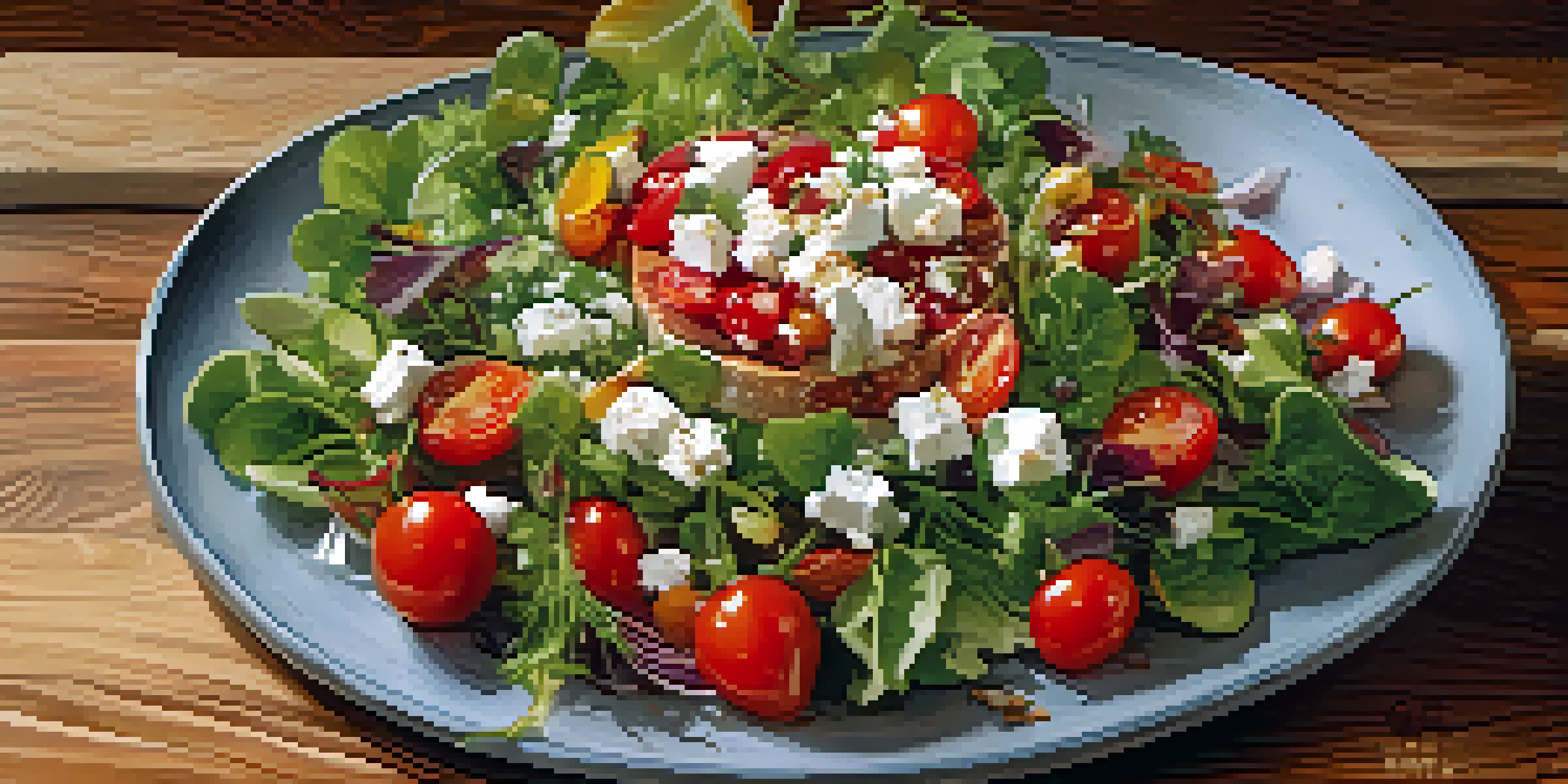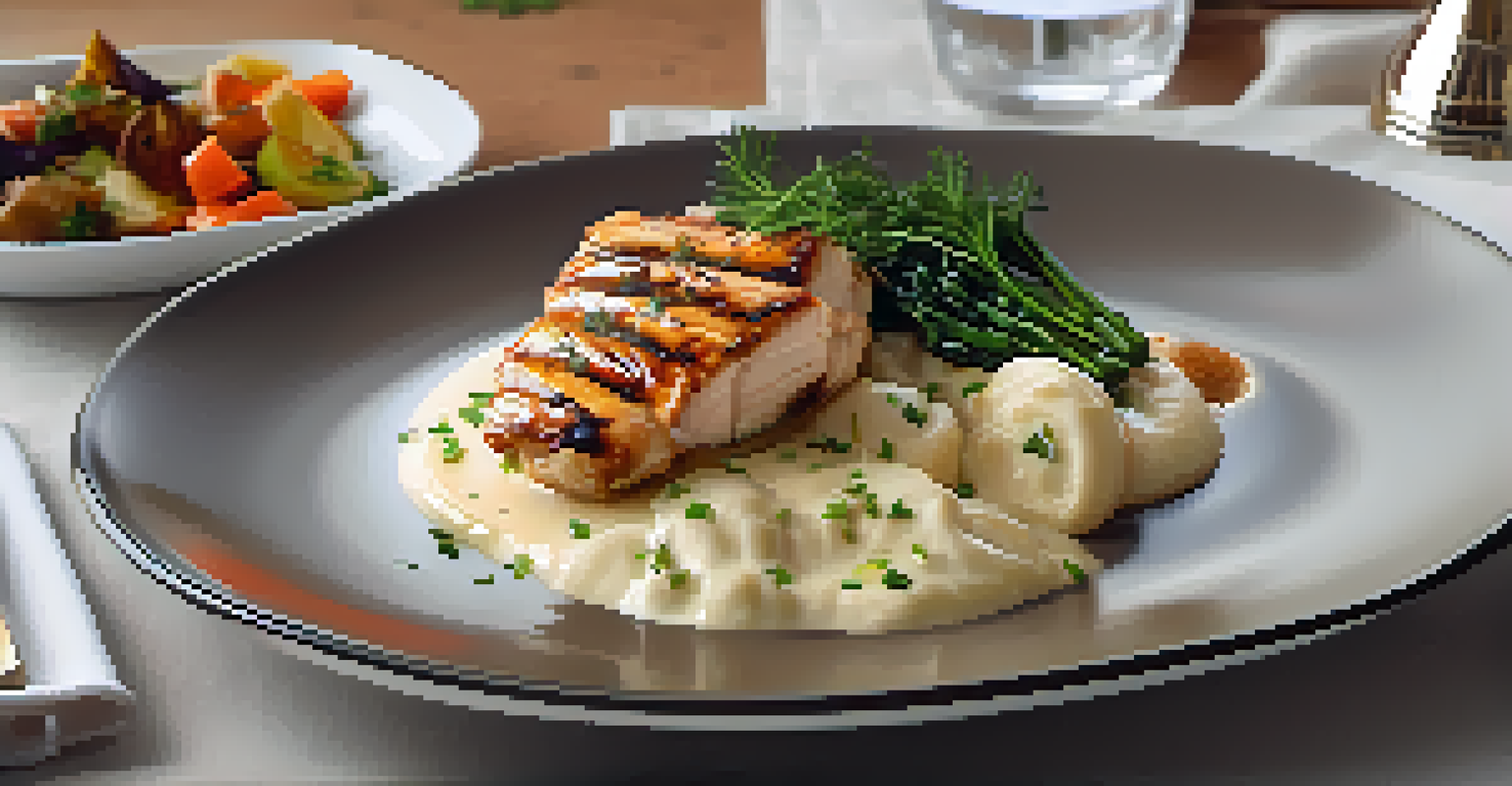The Art of Food Presentation: Instagrammable Dishes to Try

Why Food Presentation Matters in Today's Digital Age
In a world where social media dominates, the way food looks can make or break its appeal. Food presentation is not just about aesthetics; it's about enhancing the dining experience. When a dish is visually stunning, it invites curiosity and excitement, making people eager to share it online.
People eat with their eyes first.
Think about it: how often do you scroll through Instagram and stop at a beautifully plated dish? Those vibrant colors and artistic arrangements are not just for show; they can actually elevate the flavors in our minds, making everything more appetizing. This phenomenon has turned dining into a visual experience in addition to a culinary one.
Moreover, presenting food beautifully can be a conversation starter. When you share a stunning dish, it often prompts others to ask about it, leading to connections and shared experiences that go beyond just the meal itself.
Choosing the Right Plate: The Foundation of Presentation
The choice of plate can significantly impact how food is perceived. A simple white plate often allows colorful dishes to shine, while a patterned plate can add a whimsical touch to your presentation. It's like choosing the right frame for a piece of art—an effective plate choice enhances the overall visual appeal.

Consider the shape and size of your plate as well. A large plate can make a small portion look sparse, while a smaller plate can create the illusion of abundance. This is a clever trick often used in fine dining to make dishes appear more generous.
Food Presentation Enhances Experience
Visually stunning dishes invite curiosity and enhance the overall dining experience.
Don’t be afraid to experiment! A rustic wooden board can add a homey feel, while sleek glass plates can give a modern touch. The right choice can set the tone for the entire meal.
Color Combinations: Making Your Dishes Pop
Color is a crucial element in food presentation, as it can evoke emotions and enhance appetite. A plate filled with vibrant greens, reds, and yellows is far more enticing than one with muted tones. Think of your dish as a canvas where contrasting colors can create a stunning masterpiece.
Food is art; it’s a way to express who you are and how you feel.
Incorporating a variety of ingredients not only adds flavor but also visual interest. For example, a salad with mixed greens, cherry tomatoes, and crumbled feta creates a beautiful contrast that’s hard to resist. The key is to balance colors and include at least three different ones for a harmonious look.
Additionally, garnishes like edible flowers or microgreens can elevate your dish's appearance. Just a sprinkle of something fresh can add that extra pop, making your creation Instagram-ready.
Textures: Adding Dimension to Your Plates
Texture is another vital aspect of food presentation that can make a dish more appealing. Combining crispy, creamy, and chewy elements creates a dynamic eating experience. Imagine biting into a crunchy taco filled with creamy guacamole and tender meat—it’s a delightful contrast that excites the palate.
When plating, think about layering textures. For instance, a smooth puree topped with crunchy nuts or seeds can create a visually appealing and tasty juxtaposition. This not only enhances the look of the dish but also keeps diners intrigued with every bite.
Color and Texture Create Appeal
Incorporating vibrant colors and varied textures makes dishes more enticing and enjoyable.
Textures can also be emphasized through different cooking methods. Roasting, frying, or grilling can achieve various textures that play well together on the plate, adding depth and complexity to your presentation.
The Power of Negative Space in Food Presentation
Negative space refers to the empty areas around your food, allowing it to breathe visually. This technique can highlight the main dish and prevent it from looking overcrowded. Just like in art, sometimes less is more, and a well-placed piece of food on a plate can make a strong statement.
When arranging your food, leave some space around the edges. This not only makes the dish look more organized but also gives the viewer's eye a place to rest. It’s a simple trick that can elevate your presentation significantly.
Remember that negative space can also draw attention to important elements of your dish, like a special sauce or garnish. By strategically leaving space, you can guide the viewer’s focus exactly where you want it.
Creative Garnishes: Small Touches That Make a Big Impact
Garnishes are the finishing touches that can take your plate from good to great. A well-chosen garnish can add flavor, color, and even a hint of sophistication. Just a sprig of fresh herbs or a drizzle of sauce can transform your dish into a visual delight.
However, it’s important to choose garnishes wisely. They should complement the dish rather than overpower it. For example, a slice of lemon can add brightness to a rich seafood dish, enhancing both its look and taste.
Plating Techniques Make a Difference
Effective plating techniques can transform a meal into an artistic presentation that captivates diners.
Don’t forget that garnishes can also play a functional role. A sprinkle of sesame seeds can add a crunchy texture, while a dash of chili oil can bring a pop of color and extra heat, making your dish not only look good but taste even better.
Plating Techniques: Artistry on a Plate
Plating techniques can elevate your food presentation from ordinary to extraordinary. Techniques like stacking, swooshing sauces, or using rings to mold ingredients can create visually appealing arrangements. Each method tells a story and invites diners to dive in.
For instance, using a ring mold to stack ingredients creates height and allows for a stunning visual display. Similarly, a swoosh of sauce across the plate can add artistic flair, making it look like a canvas waiting to be explored.

Experiment with different techniques and find what works best for your dish. With practice, you’ll develop a signature style that captures your culinary personality and makes your creations Instagram-ready.